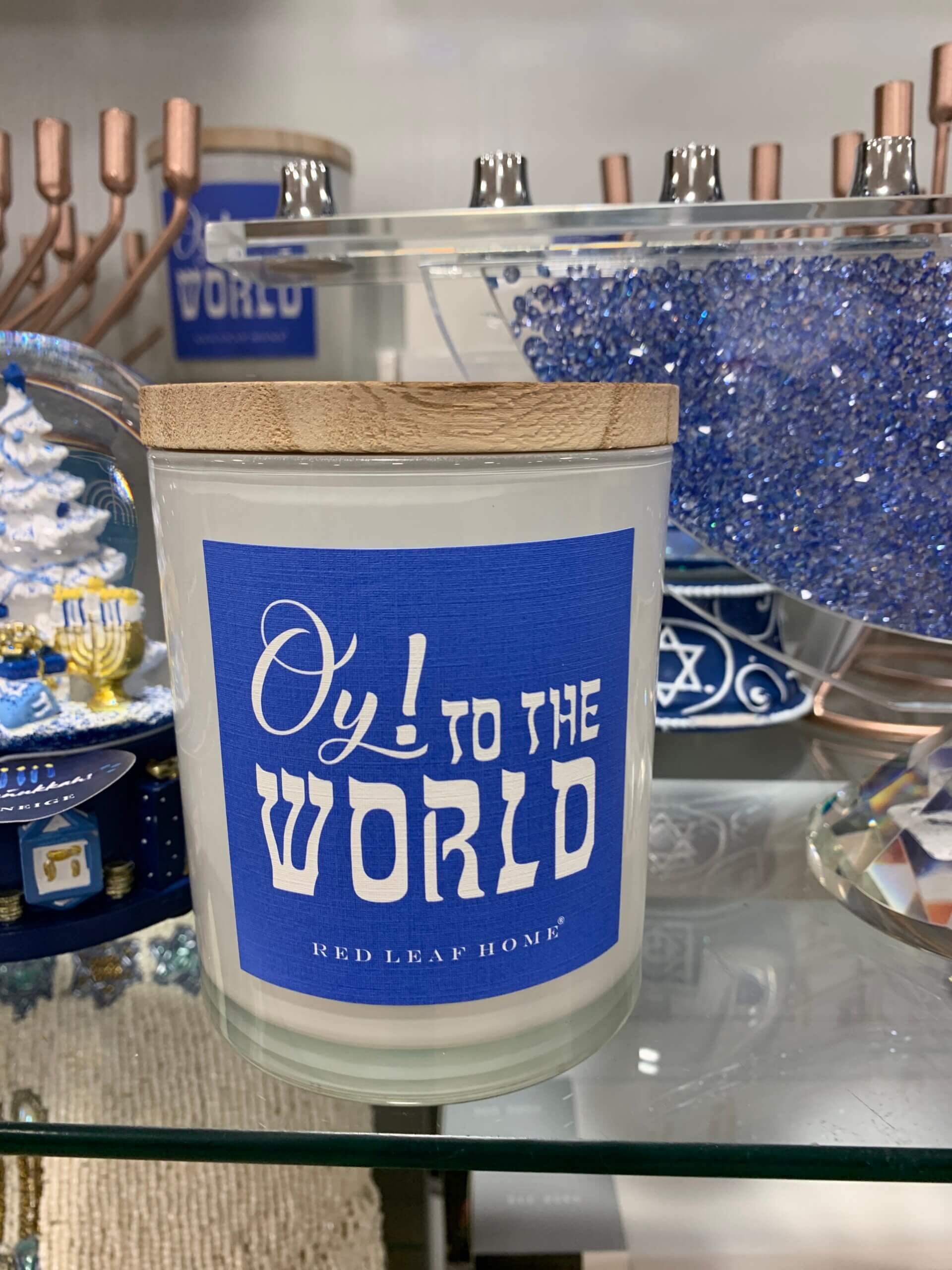Please stop rebranding Christmas items for Hanukkah
Hanukkah gnomes and blue-and-white Christmas trees are not a part of Jewish tradition

Graphic by Angelie Zaslavsky
“We suffer every year,” a fellow customer complained, as we both stared glumly at the strange Hanukkah display before us. It looked like a blue-and-white Christmas: a forest of glistening trees, snow globes, wreathes, candles and gnomes galore.
While everything in this fantasyland was designed to appeal to Hanukkah shoppers, there was not a single, genuine Hanukkah item in sight.
My kids and I were shopping at the local New York branch of a national retailer, our first stop on a family mission to find Hanukkah decorations for our home. At a time of rising antisemitism, I especially wanted to find a way, however modest, to show my sons that we are proud to be both Jewish and American. For my family, publicly displaying hanukkiyot (the traditional nine-branched candelabras) in our windows, decorating our home for Hanukkah and wearing Hanukkah-themed apparel (which I design) are an integral part of being openly Jewish in America.
We visited over a dozen brand-name stores to check out their Hanukkah displays. I appreciate that a number of these stores were willing to give Hanukkah a prominent display at the end of an aisle — or even half of an aisle. But the selections were pretty narrow. And this year in particular, too many were Hanukkah products in name only — i.e., rebranded Christmas items.

“Hanukkah stocking hangers” are not for Hanukkah; we do not place stockings on a mantle waiting for Judah Maccabee to come down the chimney.
“Hanukkah gnomes” are cute though sometimes creepy; either way, they are not for Hanukkah. Even when the gnomes are holding dreidels, hanukkiyot, or Jewish stars, they are still not suitable for Hanukkah.
Advent calendars are not for Hanukkah. There is no Advent season or official Hanukkah countdown.
Hanukkah wreaths and ornaments are not for Hanukkah. And, most important, Christmas trees — even if they are blue and have a sparkly Jewish star atop them — are not for Hanukkah.
When I spoke with Leigh Eric Schmidt, author of Consumer Rites: The Buying and Selling of American Holidays, he told me, “I don’t think there is anything inherently Christian about trees, gnomes and wreaths. But American Christians have often tried to Christianize popular holiday symbols and goods.” Although these items might have not been originally intended for Christmas, they have since been designated as such, which is why Hanukkah-ized versions of these items seem so inappropriate. Schmidt also shared that the market is “relatively indiscriminate when it comes to holiday goods” — in other words, stores just want to sell things.
Some stores, for example, fill their Hanukkah displays with blue-and-white anything. These items, ranging from tall velvet chairs, to ceramic plates, to blue-and-white gift bags, are usually repurposed from another section of the store, and have no connection whatsoever to the holiday of lights. These Hanukkah color-fillers could be considered harmless, and perhaps even extra decorative. However, when faced with low and inauthentic Hanukkah inventory to begin with, they’re the tree-topper on the tree.

It should come as no surprise that there are Facebook groups in which members share photos of their absurd Hanukkah finds. Someone recently posted a picture of a Hanukkah display at a Texas store filled with blue-and-white Santa Claus figurines. Another shared photos of blue-and-white “Hanukkah Hand-Crafted Peppermint Candy Canes in an Indiana store.”
One friend sent me a photo from a Colorado branch of a national chain which featured yahrzeit candles on its Hanukkah display. In my neighborhood, the kosher-for-Passover foods included in this same chain’s Hanukkah display were similarly out of place and distasteful. Retailers tend to indiscriminately throw together all Jewish products, with little regard for what is actually appropriate for Hanukkah, or any other holiday, for that matter.
Although most brands are more committed these days to trying to demonstrate inclusivity, Hanukkah displays are increasingly missing the mark.
To be fair I’ve seen a few menorahs which are kosher in terms of candle count and candle placement. And there are plenty of Hanukkah paper goods, gelt, cookies and cuddly plush latkes (a new find this year!) that are totally acceptable. Even the “Happy Llammakah” ugly sweaters are growing on me. But most of the merchandise I’m seeing marketed towards Jewish shoppers doesn’t cut it — including the Hanukkah candles and tea towels I’ve found imprinted with the adapted Christmas phrase “Oy to the World.”

Are American Jews actually buying this stuff? The verdict is still out on this.
Should it be out there in the first place? In my rabbinic opinion: No.
I have been beyond disappointed with the selection offered by American retailers that consistently fails to match the ritual items and decor most Jewish families use to celebrate the holiday.
Hanukkah is not a Jewish Christmas. The Talmud, a compendium of Jewish law, teaches that it is a mitzvah to publicize this miracle. Which makes it all the more important for Hanukkah merchandise to be authentic, or at least, inoffensive.
In the early 20th century, brands helped Hanukkah to reinvent itself in America by encouraging American Jews to buy foods, gifts and toys for their holiday celebrations. One hundred years later, there is no need for a “Christmas-ization” of Hanukkah. It is a well-established holiday on the American winter calendar.
Perhaps for next year — or even this week — we can keep the Christmas trees, wreaths, stocking hangers and gnomes in their proper aisles.
To contact the author, email [email protected].




















